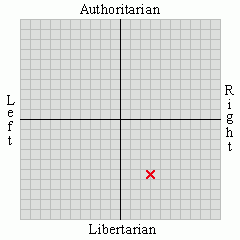 Tomorrow, there will be three hours of argument in California’s consolidated same-sex marriage case before the Supreme Court.
Tomorrow, there will be three hours of argument in California’s consolidated same-sex marriage case before the Supreme Court.As longtime readers know, I don’t see any reason why gay people should not be able to get married and I do not see any constitutional justification for denying marriage rights to gay people. However, those who have read my musings on the issue also know that I think that the demands of Constitutional equality of treatment would be satisfied by the creation of a legal institution that is the equivalent of marriage but which does not bear the same name. One of the original “gay marriage” cases, Baker v. State (the Vermont case from 1999) led to the Vermont legislature creating an institution called a “civil union,” which is limited to same-sex couples and has since been restricted in availability to cases in which at least one of the two partners to be thus joined is a citizen of Vermont. In the parlance of a later case (Lewis v. Harris, the 2006 New Jersey case), this is called a “parallel structure.”
The only state to recognize actual marriage between same-sex partners is Massachusetts. California already has a parallel structure, an institution called “domestic partnership.” California domestic partners are treated by the state exactly the same as if they were married, including needing a court petition to dissolve the domestic partnership that proceeds under the Family Code. Thus, California is a “full parallel” state, one of five (Connecticut, Vermont, New Jersey, and New Hampshire are the others). Partial parallel states are Hawaii, Maine, Oregon, and Washington, as well as the District of Columbia. New Mexico and Rhode Island have no parallel structures of their own, but they will recognize parallels issued by other states. Aside from that, no other state recognizes same-sex unions (apparently, New York City does as well, but not New York State; the city of New York is, by population, about 40% of the entire state).
Were I to live in a non-parallel state (for instance, Tennessee or Wisconsin) I would urge the creation of a parallel structure. When I did so to even very religious or conservative friends in Tennessee, I met with surprisingly little resistance despite the prevalent conservatism of the area in which we lived. I suspect that was because even for people who do not think that “marriage” is something that same-sex couples should get, the separation of a bundle of legal rights from that word defuses the issue emotionally to the point that they can step back and realize that gay people are going to be gay together whether others disapprove of their arrangements or not, and there is no harm to the rest of the world in creating a convenient legal mechanism for them to jointly own property.
However, because California is a “full parallel” state, I think that the effort to push for judicial lawmaking authorizing gay marriage here lacks substantial legal urgency. Obviously, the Federal government does not recognize a California domestic partnership, but there’s nothing at all that California can do about that other than passing toothless resolutions urging the state’s Federal representatives and other Federal officials to repeal 1 USC § 7 and 28 USC § 1738C. The point is that the Legislature here has already done all it can, other than authorizing the use of the word “marriage,” to treat same-sex couples on an equal legal footing with mixed-sex couples. So my interest in tomorrow’s case is in seeing what importance is attached to the use of the word “marriage.” California already offers “marriage by another name” to gay couples.
So the burden, I think, is properly on the advocates of same-sex marriage to explain why the rose is not as sweet when called by another name.







No comments:
Post a Comment